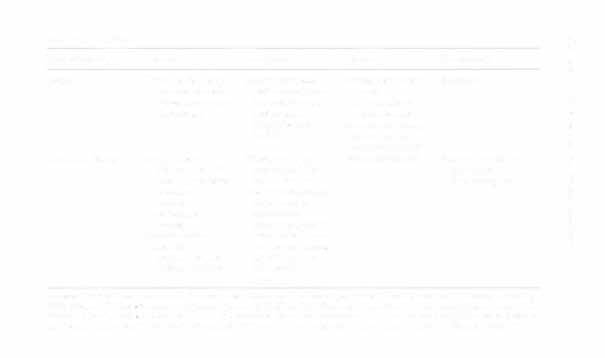i bc27f85be50b71b1 (152 page)
Read i bc27f85be50b71b1 Online
Authors: Unknown


BURNS AND WOUNDS
489
tions of every available dressing. It is the responsibility of the
therapist to read manufacturer's instructions for application, to know
the purpose of the dressing, and to make educated decisions when
choosing the appropriate dressing for a given wound at each stage of
the healing process. Clinicians should not rely on manufacturer's
claims of efficacy to justify a dressing's effectiveness. Although it is
not possible to identify every dressing, it is possible to catalog most
dressings into some basic categories: gauze, nonadherem dressings,
hydrocolloids, semipermeable films, hydrogels, foams, and calcium
alginates. Table 7-13 is a summary of the indications, advantages, and
disadvantages of different dressings.77-8o
Other Dressings
The V.A.C. (Vacuum Assisted Closure) (Kinetic Concepts, Inc., San
Antonio, TX) device assists in wound closure by applying localized
negative pressure to a special porous dressing positioned in or over
the wound. The porous dressing distributes negative pressure to the
wound and helps remove interstitial fluids. The negative pressure
applies noncompressive mechanical forces to the wound site and
draws the tissue inward, subjecting it to subatmospheric pressure.
The distortion causes epithelial cells to multiply rapidly and form
granulation tissue. The stretching also increases cell proliferation by
activating ion channels within the cells and releasing biochemical
mediators from the plasma membrane. It is also thought to Stimulate
the growth of new blood vessels. This device is worn continuously 24
hours a day. Dressings for noninfected wounds can be changed every
2-3 days or changed daily for infected wounds. Indications for this
therapy include diabetic ulcers, pressure ulcers, traumatic wounds,
meshed grafts, and flaps. Contraindications include fistulas, necrotic
tissue or eschar, untreated osteomyelitis, malignancy in wound, and
exposed arteries or veins.81.82
Cadexomer-iodine is an iodine-based wound filler (e.g., lodoflex,
iodoform) and is indicated in highly exudating wounds. It is highly
absorbent, provides a moist healing environment, and lowers the pH
of the wound. The iodine is slowly released, so it is not cytotoxic to
good tissue, but the bacteriostatic and bactericidal effects of iodine
remain.
Skin Substitutes and Biologicals
Although these will not be a first line of defense, therapists in the
acute care setting should be aware of other agents that may be used to



Table 7-13. Indications and Uses of Basic Types of Dressings
..
'"
0
Type of Dressing
Indication
Description
Advantages
Disadvantages
,.
()
'i
Gauze
May be used for any
Highly porous.
Readily available
May require frequenr
'"
type of wound if
Applied dry, wet-to-
Inexpensive
changes
()
properly applied
dry (i.e., the
Can cause skin macer-
�
and removed
dressing is put on
arion
:t
�
(although other
wet but will dry
Permeable to bacteria
0
�
dressings may be
before removal), or
Removal can be
0
0
more effective)
wet-to-wet (i.e., the
painful
"
dressing is pur on
�
0
'"
wet and removed
�
when wet).
:t
-<
�
Nonadherenr
Wounds with low-to-
Nonimpregnated or
Generally
May still adhere if
!:?
dressings
moderate drainage,
impregnated
nonirritating and
allowed to get too
r
for minor
(nonadherent
nonroxic
dry before
5!
'"
lacerations or
substance
Less likely to adhere
remOVing
'"
,.
�
abrasions, or as a
integrated into
to wound, causing
secondary dressing
dressing) dressings
less tissue
�
for deep full-
comprised of inert
disruption
thickness wounds
materials that
Relatively inexpensive
conform to the
wound surface.

Hydrocolloids
Parrial- or full-
Dressings that contain
Prevent secondary
Not for use with
rhickness wounds
absorptive particles
wound infection
anaerobic wound
with low-to-
that interact with
Impermeable to water,
infeccions
moderate drainage,
moisture to form a
oxygen, and
Removal may cause
including partially
gelatinous mass.
bacteria
skin rears on fragile
necrotic wounds
Cause the pH of the
Available in many
surrounding skin
Provide a moist
wound surface ro
forms (pastes,
wound environ-
decrease, thereby
powders, and
mem and promotes
inhibiting bacterial
sheers)
autolysis
growth.
Changed infrequently
Semipermeable films
Promote a moist
Transparent poly-
Conforms well
Highly adhesive, can
wound environ-
urethane with a
Allow for visual
be difficult to apply
ment for wounds
water-resistant
wound monitoring
Can cause skin rears,
wirh minimal
adhesive on one
especially on fragile
drainage
side.
skin
Semipermeable ro
water and oxygen
but impermeable to
bacteria.
..
c
Hydrogels
Partial-thickness
Gel composed of 96%
Highly conformable
Do not absorb much
'"
Z
wounds with
water or glycerin.
Safe for fragile skin
�
,.
minimal drainage,
Available in many
Z
c
or as a secondary
forms
"
0
dressing on a full-
c
Z
thickness wound
c
�
...
'"
....

Table 7-13. Continued
...
'"
N
Type of Oressing
Indication
Description
Advantages
Disadvantages
>
Foams
Partial- or full-thick
Polyurethane foam
Nonadherenr to skin
Expensive
�
ness wounds with
with twO surfaces: a
surface
�
minimal-ro-moderhydrophilic inner
"
Highly absorbable
m
ate drainage
surface and a
and conformable
J:
�
hydrophobic outef
Permeable to oxygen
o
surface.
(reduce risk of
1)
o
anaerobic infection)
"
Calcium alginates
Partial- and full
Fibrous sheets and
Highly conformable
Require a secondary
o
"
thickness wounds
rope derived from
dressing to keep
�
J:
